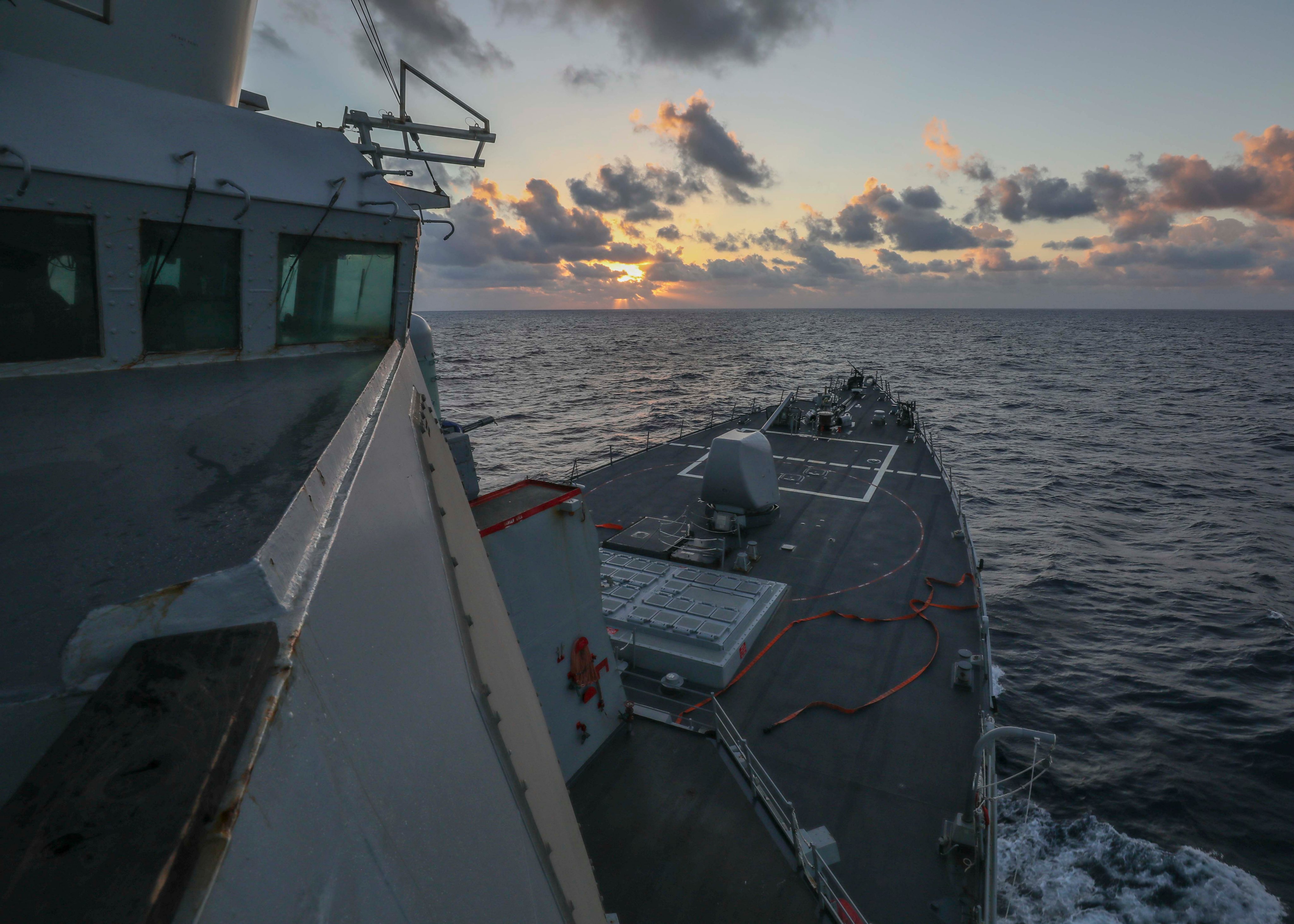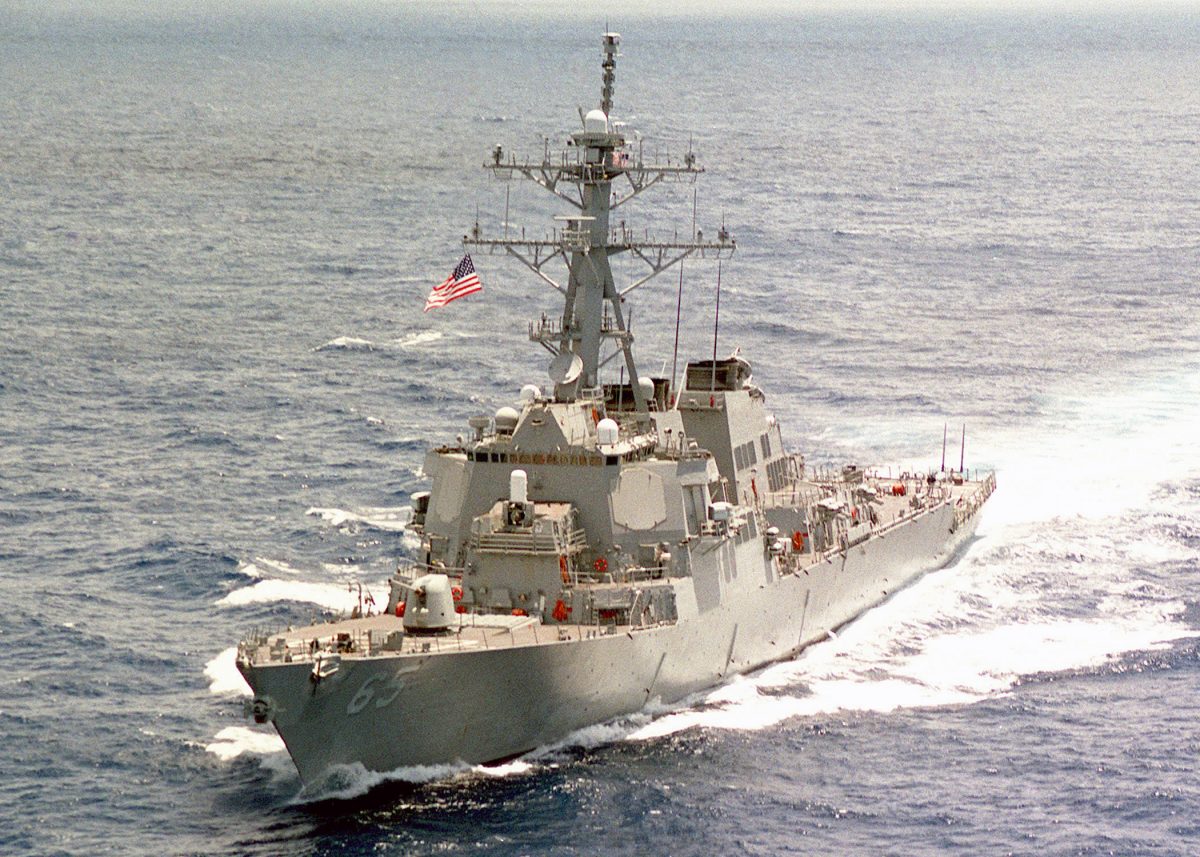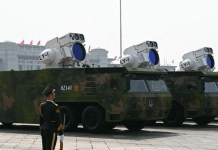Days after an American nuclear-powered submarine made a rare port call in the Pacific island of Guam, a US destroyer has sailed the contested South China Sea triggering fresh tension with China.
China’s Ministry of Defense claimed a US destroyer entered “Chinese territorial waters near the Xisha archipelago (Paracel Islands) without permission”.

Tian Junli, a spokesman for China’s People’s Liberation Army (PLA) Combat Command South Zone, said in a statement that Beijing has requested Washington to stop its provocative acts in the South China Sea.
“On January 20, the American guided-missile destroyer USS Benfold illegally entered the territorial waters near the Xisha archipelago without obtaining appropriate permission from the Chinese government,” the statement read.
7th Fleet Destroyer conducts Freedom of Navigation Operation in South China Seahttps://t.co/IsZdZ5Tmxx pic.twitter.com/6j3qAJ1ead
— 7th Fleet (@US7thFleet) January 20, 2022
Paracel Islands are one of the many disputed islands between China and other Southeast Asian countries. The Paracels are a group of 130 small coral islands and reefs in the South China Sea’s northwest corner. According to the CIA Factbook, they have no indigenous population and only Chinese military garrisons of 1,400 people, said CNN.
Vietnam and Taiwan both claim the islands, which have been in Chinese hands for more than 46 years. Military installations of the People’s Liberation Army (PLA) have been built on the islands.
According to the US Navy statement, the USS Benfold also objected to Vietnam and Taiwan’s assertions, both of which are friendly countries. The US warship was apparently conducting a ‘Freedom of Navigation Operation’.
“All three claimants require either permission or advance notification before a military vessel engages in ‘innocent passage’ through the territorial sea. Under international law … the ships of all states — including their warships — enjoy the right of innocent passage through the territorial sea. The unilateral imposition of any authorization or advance-notification requirement for innocent passage is unlawful,” the US Navy statement said.
However, China took a strong exception to this incident that it considers detrimental to its security and sovereignty. In fact, it has made a lot of hue and cry in almost all such instances in the past as American FONOP is a regular occurrence.
According to Tian Junli, the PLA naval and air force monitored and escorted the American ship, and warned it to leave the area. He noted that “the actions of the American side are a serious violation of China’s sovereignty and security”.
“The facts once again prove that the United States is the biggest disruptor of peace and stability in the South China Sea,” Tian continued. “We demand that the American side immediately stop such provocative actions.”
Sailing Through Troubled Waters
China claims sovereignty over practically the entire 1.3-million-square-mile South China Sea, which it has reportedly continued to militarize. China often gets into minor confrontations with other claimants of the islands.
Last year, it was accused by the Philippines of intruding into its territory with about 220 vessels manned by what Manila called Chinese maritime militia.
While Beijing continues to expand its claims in the region and assert power, the United States undertakes regular FONOP operations to convey the message of open seas. However, in the South China Sea, it has become a direct challenge to the Chinese assertions and dominance in the region.
US Navy spokesperson Langford said that this FONOP was the second against Chinese claims in the South China Sea this year as the USS Benfold went near the Spratly Islands two days ago but he highlighted that it was part of a long-standing US military practice.
This is not the first time that the Chinese and the Americans are exchanging barbs over what the US military calls the FONOP. In 2018, during a similar American passage through the South China waters, a PLA Navy destroyer almost collided with an American warship.
The leaked images of this close encounter showed how it was a narrow escape for both parties, as previously reported by the South China Morning Post.
These incredible photos show how close a Chinese warship came to colliding with a US destroyer during a tense standoff in the South China Sea https://t.co/tDuueVD3x1 pic.twitter.com/W0x5UBpBPQ
— Indo-Pacific News – Watching the CCP-China Threat (@IndoPac_Info) October 3, 2018
In July last year, on the anniversary of an international court ruling that had said that Beijing had no claim over the South China Sea, PLA said it “drove away” a US vessel that had illegally entered Chinese seas near the Paracel Islands.
Incidentally, American President Joe Biden had informed his Chinese counterpart Xi Jinping of Washington’s plans to maintain a regular presence in the Indo-Pacific last year.
While the US Navy unambiguously stated that it was challenging all the claimants that require an international ship on an innocent mission to seek previous permission, it especially singled out China for trying to create hegemony over the entire region.
The Navy claimed that China has established “straight baselines” covering all of the waters within the island group and that the Benfold was challenging those claims as well, stated CNN.

USS Benfold
The USS Benfold is a destroyer of the Arleigh Burke-class in the US Navy. It is a multi-mission platform that can conduct Anti-Aircraft Warfare with the AEGIS combat system suite and anti-aircraft missiles, Anti-Submarine Warfare with a towed sonar array and anti-submarine rockets, Anti-surface Warfare with a Harpoon missile launcher, and strategic land strike with Tomahawk missiles. The Aegis Ballistic Missile Defense System was first installed on the Benfold, of all vessels.

The Benfold moved her homeport from San Diego, California, to Yokosuka, Japan, in October 2015. It has since been involved in these Freedom of Navigation Missions that have become a centerpiece of the American Indo-Pacific policy, aimed at limiting China’s unprecedented rise.
For 40 years, the US Navy has been conducting passages through waters claimed by coastal nations as their exclusive area, according to the US Department of Defense (DoD).
The service has “consistently reaffirmed the United States’ policy of exercising and asserting its navigation and over-flight rights and freedoms around the world”. According to the Pentagon, these “assertions signal that the United States does not acquiesce to other states’ excessive maritime claims.
In the face of the Chinese push to assert maritime sovereignty over the entire South China Sea and American push back against it, there could be more such incidents making news in the near future.
- Contact the author at sakshi.tiwari9555@gmail.com
- Follow EurAsian Times on Google News




